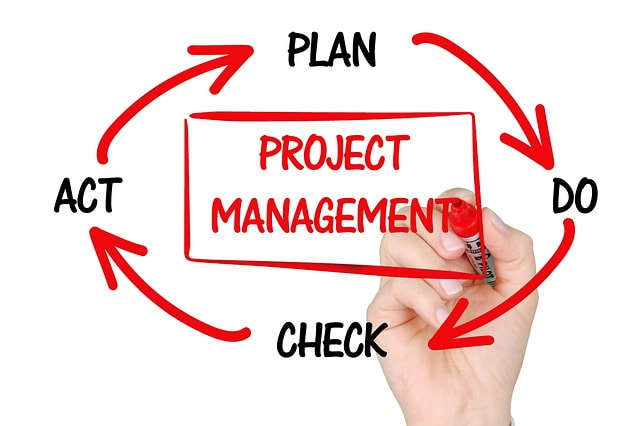
.jpg)
From Business Agreement to Project Kickoff: Essential Guide for NoCode & LowCode Project Planning
Published on December 31, 2024
By Marianella Saavedra Terkes · 7 minute read
Following the initial commercial phase of a no-code/low-code project, the first meeting is pivotal for the Project Manager, who is adept at helping clients refine and shape their ideas into actionable development strategies. One key advantage of no-code/low-code solutions is their ability to swiftly and effectively translate these ideas, facilitating rapid development and deployment. This article will guide you through conducting a productive project initiation meeting within the no-code ecosystem.
Pre-Meeting Preparation for Project Managers

Practical Tips for a Successful Meeting
Before any project meeting, especially the first one, thorough preparation is key to ensuring a productive and successful discussion. Here are some practical tips to help you get ready:
Define the Meeting’s Objective: Clearly outline the purpose and goals of the meeting. This ensures everyone is aligned and understands what needs to be achieved.
Create an Agenda: Develop a detailed agenda that lists the topics to be discussed, the time allocated for each topic, and the expected outcomes. This helps keep the meeting focused and on track.
Gather Relevant Data: Collect and review all relevant data, reports, and documents that will be discussed. Having this information at hand will facilitate informed decision-making.
Identify Key Stakeholders: Ensure that all relevant stakeholders are invited and prepared for the meeting. Their input is crucial for a comprehensive discussion.
Prepare Visual Aids: Prepare any visual aids that will be used during the meeting. Visuals can help clarify complex points and keep the audience engaged.
Establish a Clear Communication Plan: Make sure all attendees understand the communication plan, including the meeting’s format, timing, and expected outcomes. Clear communication is essential for a smooth meeting process.
By following these practical tips, you can create a well-prepared, productive, and successful meeting environment that sets the stage for effective project planning and execution.
Understanding the No-Code/Low-Code Context
Before diving into technical discussions, it's crucial to ensure the client comprehends no-code/low-code software solutions. While the initial team has already introduced platforms like Bubble.io, Webflow, Airtable, FlutterFlow, WeWeb, Xano, Supabase, and Firebase, your role as a Project Manager is to align these tools with specific business needs and technical limitations.
Validating Business Requirements
During the commercial phase, clients often articulate general needs like “we need a web application” or “we want an e-commerce platform.” They may also mention specific apps that enhance device capabilities and provide a secure environment. Your first task is to delve deeper into specific requirements, while also asking the client for any references or inspiration they have in mind. For instance, inquire if there are existing web or mobile applications they admire, or if they have seen any particular features or designs they wish to incorporate:
What type of user interactions are expected?
Are there specific UI/UX requirements that might influence tool selection?
What level of customization is needed?
Are there any specific integration requirements with existing systems?
Defining the Technical Stack

The no-code/low-code ecosystem offers a diverse array of tools, each with unique strengths tailored to different project needs. A crucial aspect of these tools is their reliance on the browser for the functioning of web applications, facilitating seamless communication between the client interface and server data. Your discussion should cover:
Primary Platform Selection
When considering the best tool for your project, it's important to align the customer's needs with the platform's capabilities. Here are some popular choices:
Bubble.io for complex web applications with custom logic
Webflow for marketing sites and content-heavy platforms
FlutterFlow for mobile app development
WeWeb for versatile web applications
Backend and Automation Tools
For backend services and data management, consider these robust options:
Supabase, Firebase, and Xano for backend development and database management
Airtable for flexible data handling
For automation and workflow enhancements, explore:
Make and Zapier, which provide extensive automation capabilities
By selecting the right combination of these tools, you can create a powerful and efficient no-code/low-code solution tailored to your business needs.
Integration Requirements
API connections needed
Third-party services to incorporate
Authentication systems required
Data migration plans from existing systems
Understanding Scale, Performance, and Security Needs
No-code/Low-code platforms have different capabilities when it comes to scaling. Discuss:
Expected user volume
Data processing requirements
Response time expectations
Geographic distribution of users
Backup and recovery needs
Setting Up the Development Framework

While these platforms present certain challenges, they can be effectively navigated through meticulous integration planning. By emphasizing the positive aspects, they empower businesses to align objectives with the robust capabilities of no-code platforms, ensuring a successful and rewarding project outcome.
Development Methodology
Sprint structure
Prototype review cycles
Testing procedures
Team Structure
Project Manager
No-code/Low-code developers
UI/UX designers
Integration specialists if needed
QA team
Client-side testers and validators
Creating the Initial Roadmap
Break down the project into manageable phases:
Project Manager's Task
Create user stories and user flows
Develop the project roadmap
Establish the project timeline
Design Phase
Wireframe development
UI component selection
Design system setup
Development Phase
Database structure setup
Workflow creation
Integration implementation
Custom logic development
Testing Phase
User acceptance testing
Performance validation
Security testing
Quality Assurance (QA) and Client Handover
Provide clients with detailed documentation and engaging training sessions to empower them with the necessary skills and knowledge
Facilitate a seamless transition for client-side testing and feedback, ensuring any issues are promptly addressed and resolved
Launch Preparation and Execution
Finalize deployment strategies and timelines
Perform a pre-launch checklist to identify any last-minute issues
Coordinate with all stakeholders to ensure readiness for launch
Execute the launch plan and monitor initial performance metrics
Data-Driven Decision Making

Gathering and Analyzing Project Data
Data-driven decision making is a cornerstone of successful project management. It involves gathering and analyzing data to inform decisions and drive project success. Here are the key steps to follow:
Identify Relevant Data Sources: Determine what data is relevant to the project and where it can be sourced. This could include user data, market research, or performance metrics.
Collect and Store Data: Collect data from various sources and store it in a centralized location, such as a database or spreadsheet. This ensures that all data is easily accessible for analysis.
Analyze Data: Use tools and techniques, such as data visualization and statistical analysis, to analyze the data. Look for trends, patterns, and insights that can inform your project decisions.
Interpret Results: Interpret the results of the analysis to identify key insights and recommendations. This step is crucial for turning raw data into actionable information.
Communicate Findings: Communicate the findings and recommendations to stakeholders using clear and concise language and visual aids. Effective communication ensures that everyone understands the data and its implications.
By following these steps, you can ensure that your project is driven by data and that decisions are informed by solid evidence, leading to better outcomes and more efficient processes.
Project Management Tools and Communication
Select appropriate tools for:
Project tracking
Design collaboration
Client communication
Documentation management
Risk Assessment and Mitigation
Address common risks:
Platform limitations and workarounds
Integration challenges
Scalability concerns
Data security
Backup and recovery procedures
Launch and Deployment
Preparing for Launch and Deployment
The launch and deployment phase is critical for the success of any project. It involves ensuring that all necessary steps are taken to guarantee a smooth and successful launch. Here are some key steps to follow:
Develop a Launch Plan: Create a detailed plan that outlines the steps necessary for a successful launch and deployment. This should include timelines, responsibilities, and contingency plans.
Test and Quality Assurance: Conduct thorough testing and quality assurance to ensure that the project meets the required standards. This includes functional testing, performance testing, and security testing.
Train Users: Provide training and support to users to ensure they can use the project effectively. This might involve creating user manuals, conducting training sessions, or offering ongoing support.
Establish Monitoring and Maintenance: Set up processes for monitoring and maintaining the project post-launch. This ensures that any issues are quickly identified and addressed, and that the project continues to meet the required standards.
Communicate with Stakeholders: Keep stakeholders informed about the launch and deployment plans and timelines. Clear communication helps manage expectations and ensures that everyone is prepared for the launch.
By following these steps, you can ensure that your project is launched and deployed successfully, meeting all required standards and providing a positive experience for users and stakeholders alike.
Next Steps and Immediate Deliverables
End the meeting with clear next actions:
Platform access setup and permissions
Initial wireframe development timeline
First sprint planning
Documentation requirements
Training needs assessment
Conclusion
The success of a no-code/low-code project heavily depends on properly aligning business needs with platform capabilities from the start. This initial meeting sets the tone for the entire project and ensures all stakeholders understand both the possibilities and limitations of the chosen no-code/low-code approach. Additionally, it is important to schedule several follow-up meetings to touch base and refine the project plan as needed until the project is ready to start.
Embrace the tremendous advantages that no-code/low-code platforms offer, such as rapid development speed and unparalleled flexibility, which empower businesses to create innovative solutions efficiently. While these platforms come with their own constraints, your role is to expertly guide the client through these considerations, ensuring a seamless focus on their business objectives.
Always document the decisions made during this meeting, as they will form the foundation of your project plan and help maintain alignment between client expectations and no-code/low-code platform capabilities throughout the development process.

Accelerating Software Development with Vibe Coding and AI Tools at Kreante

Kreante: Accelerating Your AppDevelopment with Low-Code, AI, and “Vibecoding”




.png)


.svg)
